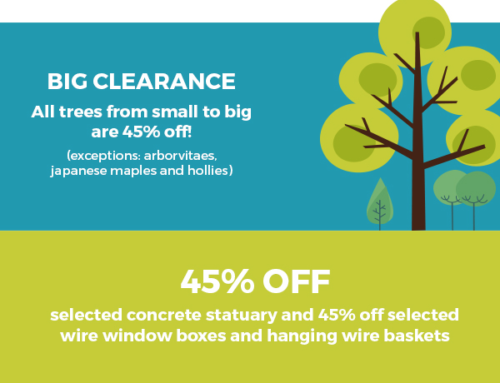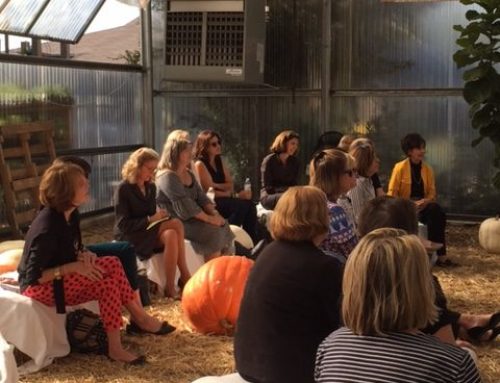Spring will soon arrive, and with it, your local garden center/big box retailer/discounter will feature a stack of ceramic pots of all sizes—usually massed out front—to tempt you. I have a few ideas about how to use pots in your landscape. Their addition there, and not just lined up on your deck or by the walk, can add dimension to your planting, depth to your use of color, and height, which you need when planting most annuals.

Group your pots for best show. One pot, while lending an architectural element, won’t give you the oomph you can get out of several. And, yes, size matters. Larger pots mean more soil volume, which translates to less watering in the heat. Buy big ones, but also think of graduated sizes. You don’t want everything to be the same height or plantings to all be the same size.

Think pot texture, not color. The best pots to use have metallic finishes and are textured. The texture complements the color, shape and size of your plantings. But why a metallic finish? Simply put, colored ceramic pots quickly look dated and stale. And their colors, while attractive at the garden center, turn garish, when filled with blooming plants. You want the color of your featured pots to recede, and the color of your foliage and blooms to pop.

Make silver your gold standard. Notice how this sprayed silver pot provides a sort of serene basis when filled to profusion with blooming plants. And then there’s the foliage. Green looks best with a metallic every time. (And you’ll want something green in your pot to provide contrast for the color.)

See double. Pairs of pots planted identically give you great show, especially on an expanse of concrete, or area like pool or patio. And there’s something kind of happy about a pair of large pots spilling over with color.
Large pots, with a mix of sizes, and in cool metallic tones, is the way to go. And don’t limit them to use on a hard surface. Let them be part of the garden itself. Everyone loves the vibrancy of New Guinea impatiens, and they withstand the heat. But the problem is that these hybrids, even at maturity, are rarely more than a foot high. But if you transplant them into a pot that is 30 inches high, then you get that rollicking color at your waist, not your ankles.

One last bit of advice, and this time about the plants themselves. Select for color, size, and height. Add a perennial plant for foliage and height, such as a palm, dracaena, croton. Variety is good, but try using identical plants in groups of pots, or at least plants in the same family. Unity of design is important here. And don’t forget the old plantsman creed for what to choose for your pots; thriller, spiller, filler. You want one of each. And, oh, yeah, don’t forget to use time release food and water, water, water. All your gorgeous plantings in their ample pots will thank you for it.
Live Life to the Fullest,
Chris H. Olsen
chrisholsen.com
botanicagardens.com




